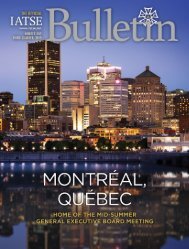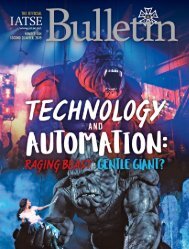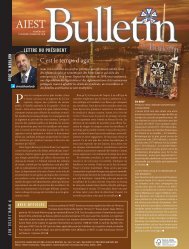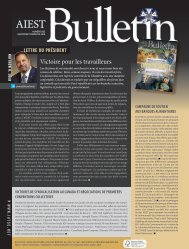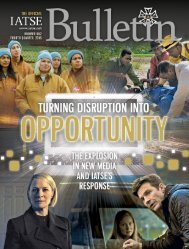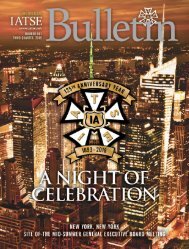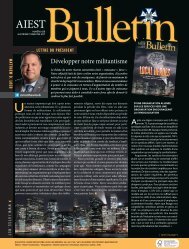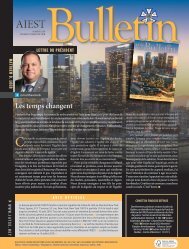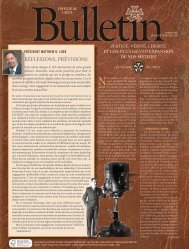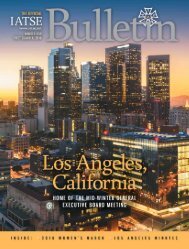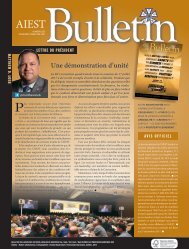IATSE-2nd2018_web
Create successful ePaper yourself
Turn your PDF publications into a flip-book with our unique Google optimized e-Paper software.
THE MOTION PICTURE<br />
INDUSTRY TRANSFORMS<br />
When the boom years of the post-war era came, the studios were ready. In fact one of motion picture industry’s most profitable<br />
year ever came in 1946. The studio system meant that, in addition to the “talent” (writers, actors, directors), the<br />
technicians were also part of a studio’s repertory company.<br />
<strong>IATSE</strong> carpenters, electricians, sound technicians, editors,<br />
hair stylists, wardrobe personnel, and make-up artists were<br />
crucial components of the studio machinery.<br />
These technicians helped the studios turn out thousands of<br />
pictures during these years, everything from mundane gangster<br />
movies to cinematic masterpieces. These films depended on<br />
lighting, set design, sound and other technical effects as much<br />
as they depended on script, acting and directing. Orson Welles<br />
may have had the ideas, but it took an <strong>IATSE</strong> technician to make<br />
them happen.<br />
As the industry evolved, <strong>IATSE</strong> evolved with it. Alliance<br />
members worked for the major studios, such as MGM,<br />
Paramount, Warner Brothers and Columbia as well as for the<br />
growing number of successful independents, such as Disney<br />
and Samuel Goldwyn. They also worked for some smaller<br />
independents, such as Monogram, who were organized under<br />
the Independent Motion Picture Producers Association.<br />
Eventually, <strong>IATSE</strong> members in Hollywood would find<br />
themselves having to negotiate with yet another association —<br />
the Alliance of Television Producers, who made motion pictures<br />
for the small screen. The <strong>IATSE</strong>’s success in negotiating with so<br />
many rival producers lay in the fact that members were involved<br />
in the motion picture process every step of the way, from concept<br />
to reality — from the sound stage to the editing room to the film<br />
lab and exchange to the projection booth.<br />
Even <strong>IATSE</strong> members in the film laboratories contributed<br />
significantly to the overall product, tackling the many<br />
complicated procedures required to develop the film and<br />
make flawless release prints. These skilled professionals worked<br />
under the jurisdiction of Laboratory Technician Locals from<br />
Hollywood to Chicago, from Detroit to New York.<br />
THE GOVERNMENT AND<br />
THE COURTS STEP IN<br />
Before World War II had ended, U.S. Courts ruled that<br />
the motion picture industry’s methods of distributing movies<br />
represented an illegal restraint of trade. The courts opposed<br />
block booking, claiming it was unfair to individual exhibitors<br />
because it required them to book many pictures they didn’t want<br />
just to get the few they did.<br />
54



